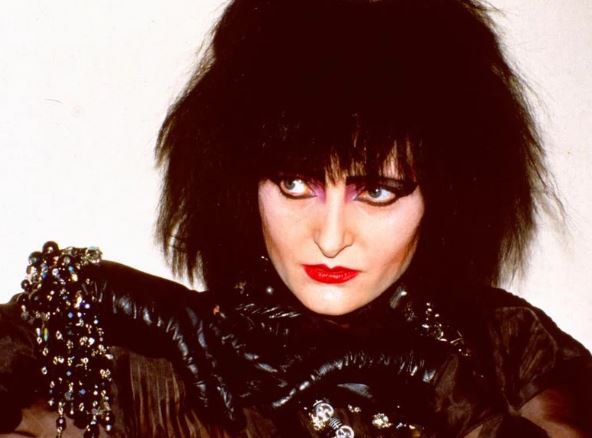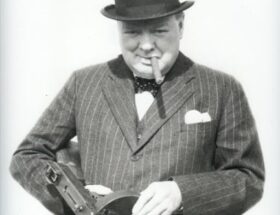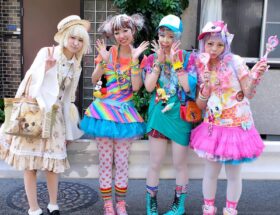Goth culture is a unique and enduring subculture that has left an indelible mark on the worlds of fashion, music, and pop culture. Originating in the late 1970s, goth has evolved into a diverse and influential movement characterized by its dark aesthetic, introspective music, and a loyal community of enthusiasts. In this 3000-word article, we will embark on a journey through the rich history of goth culture, exploring its fashion evolution, musical landscape, and the celebrities who have embraced its mystique.
Part 1: The Birth of Goth
The roots of goth culture can be traced back to the late 1970s in the United Kingdom. It emerged as a response to the punk movement and was heavily influenced by post-punk music and the works of Gothic literature.
1. Music as the Catalyst
Goth music was the catalyst for the emergence of the subculture. Bands like Bauhaus, Siouxsie and the Banshees, and Joy Division played pivotal roles in shaping the goth sound with their haunting melodies, atmospheric compositions, and introspective lyrics.
2. Influences from Gothic Literature
Goth culture drew inspiration from Gothic literature, with references to works like Mary Shelley’s “Frankenstein” and Bram Stoker’s “Dracula.” These literary influences added depth to the subculture’s themes of darkness, romance, and melancholy.
Part 2: The Evolution of Goth Fashion
Goth fashion has undergone significant transformations over the decades, reflecting a blend of historical, Victorian, and punk influences. Each era within the goth subculture has its unique style.
1. Early Goth (Late 1970s – Early 1980s)
- Post-Punk Influences: Early goth fashion drew heavily from post-punk aesthetics, with musicians like Siouxsie Sioux sporting dramatic eye makeup and angular hairstyles.
- Victorian Elements: Victorian-inspired clothing, such as lace, corsets, and high-collared shirts, became early staples in goth wardrobes.
- DIY Ethic: DIY fashion was prevalent, with goths often customizing their clothing to create unique and individualistic looks.
2. Batcave Era (Mid-1980s)
- Club Culture: The Batcave nightclub in London became a hub for goth fashion experimentation. Leather, PVC, and fishnet stockings were popular clubwear.
- Goth Pioneers: Bands like Specimen and Alien Sex Fiend embraced a flamboyant and theatrical style that embraced dark glamour.
3. Romantic and Victorian Revival (Late 1980s – Early 1990s)
- Romantic Goth: The late 1980s saw a romantic revival in goth fashion, with flowing dresses, velvet, and lace becoming prominent.
- Edwardian and Victorian Elements: The goth look incorporated Edwardian and Victorian elements, such as top hats, cravats, and bustle skirts.
4. Industrial and Cybergoth (1990s – 2000s)
- Industrial Influence: The industrial music scene brought an edgier, cyberpunk-inspired fashion to goth culture. PVC, latex, and cyber accessories like goggles and gas masks became prevalent.
- Cybergoth: A subgenre of goth fashion, cybergoth embraced neon colors, reflective materials, and futuristic aesthetics.
5. Contemporary Goth (21st Century – Present)
- Diversity: Contemporary goth fashion is marked by diversity, with goths embracing a wide range of styles, from traditional goth to nu-goth and pastel goth.
- Influence of Online Communities: The internet has played a significant role in the globalization and diversification of goth fashion, allowing enthusiasts to connect and share their styles online.
Part 3: Iconic Figures in Goth Culture
Numerous celebrities, musicians, and artists have embraced goth culture and become iconic figures within the subculture and beyond.
1. Siouxsie Sioux
Siouxsie Sioux, the frontwoman of Siouxsie and the Banshees, is often referred to as the “Queen of Goth.” Her distinctive fashion sense and groundbreaking music made her an influential figure in both goth and post-punk scenes.
2. Peter Murphy
As the lead singer of Bauhaus, Peter Murphy’s ethereal vocals and charismatic stage presence contributed significantly to the early goth sound. His theatrical fashion style, characterized by sharp suits and striking makeup, left a lasting impact.
3. Robert Smith
Robert Smith, the frontman of The Cure, is known for his distinctive and disheveled appearance, characterized by teased hair and smeared lipstick. His band’s melancholic music and Smith’s unique look made him an iconic figure in the goth scene.
4. Lydia Lunch
Lydia Lunch, a prominent figure in the no wave and post-punk scenes, brought a provocative and rebellious edge to goth fashion. Her fusion of punk aesthetics with goth sensibilities challenged traditional gender roles in both music and fashion.
5. Marilyn Manson
Marilyn Manson, with his provocative stage persona and darkly theatrical style, became a symbol of goth culture in the 1990s. His music and fashion choices challenged societal norms and pushed the boundaries of mainstream acceptance.
Part 4: The Global Impact of Goth Culture
Goth culture has transcended geographical boundaries and continues to thrive in various parts of the world. From Germany’s Wave-Gotik-Treffen to the emergence of Japanese Visual Kei, goth culture has made a global impact.
1. Wave-Gotik-Treffen (Leipzig, Germany)
The Wave-Gotik-Treffen (WGT) is one of the largest and most renowned goth festivals in the world. It attracts thousands of enthusiasts from around the globe who come to celebrate all aspects of goth culture, from music and fashion to art and literature.
2. Japanese Visual Kei
Japan has its own unique take on goth culture through the Visual Kei movement. Characterized by flamboyant and gender-bending fashion, Visual Kei bands like X Japan and Dir En Grey have gained international recognition.
3. Latin American Goth Scene
Latin America has a thriving goth scene, with countries like Mexico, Brazil, and Argentina hosting goth festivals and events. Latin American goths often infuse their style with elements of their own cultural heritage.
Part 5: The Enduring Appeal of Goth Culture
Despite being often associated with darkness and melancholy, goth culture has an enduring appeal that transcends generations. Its influence can be seen in various aspects of contemporary culture.
1. Influence on Contemporary Fashion
Goth fashion continues to inspire contemporary designers and mainstream fashion. Elements like dark aesthetics, lace, leather, and corsets frequently appear in high fashion collections.
2. Impact on Music
Goth music has evolved into various subgenres, with bands like My Chemical Romance and Evanescence achieving mainstream success while carrying elements of goth culture.
3. Pop Culture References
Goth culture is frequently referenced in pop culture, from films like “The Crow” to TV shows like “Buffy the Vampire Slayer” and “American Horror Story.”
4. Online Communities
The internet has allowed goths from around the world to connect, share their styles, and discuss their love for the subculture through online communities and social media platforms.
Conclusion
Goth culture, with its distinctive fashion, introspective music, and diverse community, has remained a resilient and influential subculture for over four decades. From its humble beginnings in the late 1970s to its global reach today, goth culture continues to captivate and inspire generations of individuals who are drawn to its dark elegance, mystique, and sense of belonging. Whether through its fashion, music, or iconic figures, goth culture remains a testament to the enduring power of self-expression, individuality, and the exploration of the shadowy corners of human existence.








